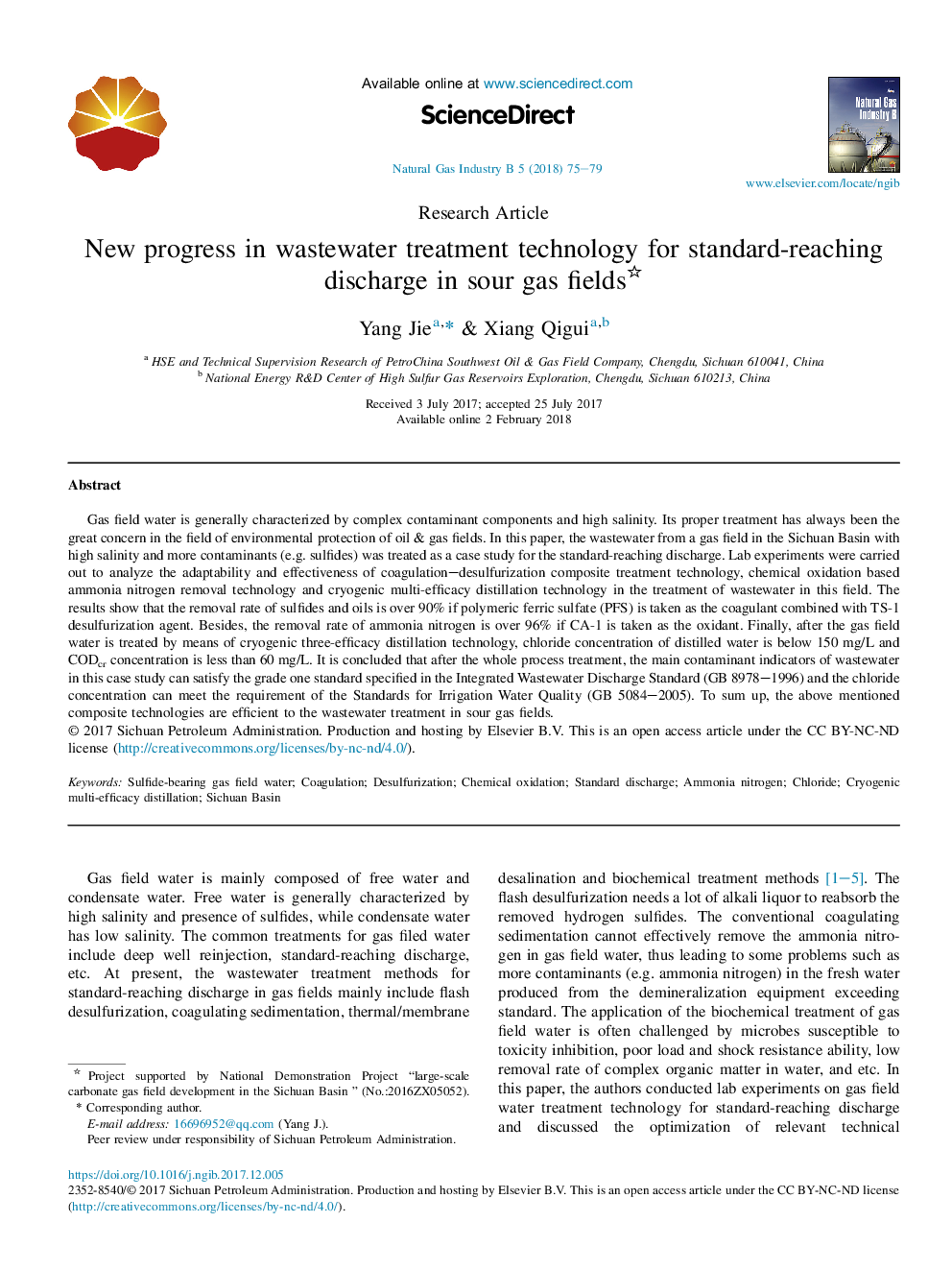| Article ID | Journal | Published Year | Pages | File Type |
|---|---|---|---|---|
| 8109609 | Natural Gas Industry B | 2018 | 5 Pages |
Abstract
Gas field water is generally characterized by complex contaminant components and high salinity. Its proper treatment has always been the great concern in the field of environmental protection of oil & gas fields. In this paper, the wastewater from a gas field in the Sichuan Basin with high salinity and more contaminants (e.g. sulfides) was treated as a case study for the standard-reaching discharge. Lab experiments were carried out to analyze the adaptability and effectiveness of coagulation-desulfurization composite treatment technology, chemical oxidation based ammonia nitrogen removal technology and cryogenic multi-efficacy distillation technology in the treatment of wastewater in this field. The results show that the removal rate of sulfides and oils is over 90% if polymeric ferric sulfate (PFS) is taken as the coagulant combined with TS-1 desulfurization agent. Besides, the removal rate of ammonia nitrogen is over 96% if CA-1 is taken as the oxidant. Finally, after the gas field water is treated by means of cryogenic three-efficacy distillation technology, chloride concentration of distilled water is below 150Â mg/L and CODcr concentration is less than 60Â mg/L. It is concluded that after the whole process treatment, the main contaminant indicators of wastewater in this case study can satisfy the grade one standard specified in the Integrated Wastewater Discharge Standard (GB 8978-1996) and the chloride concentration can meet the requirement of the Standards for Irrigation Water Quality (GB 5084-2005). To sum up, the above mentioned composite technologies are efficient to the wastewater treatment in sour gas fields.
Related Topics
Physical Sciences and Engineering
Energy
Energy Engineering and Power Technology
Authors
Jie Yang, Qigui Xiang,
